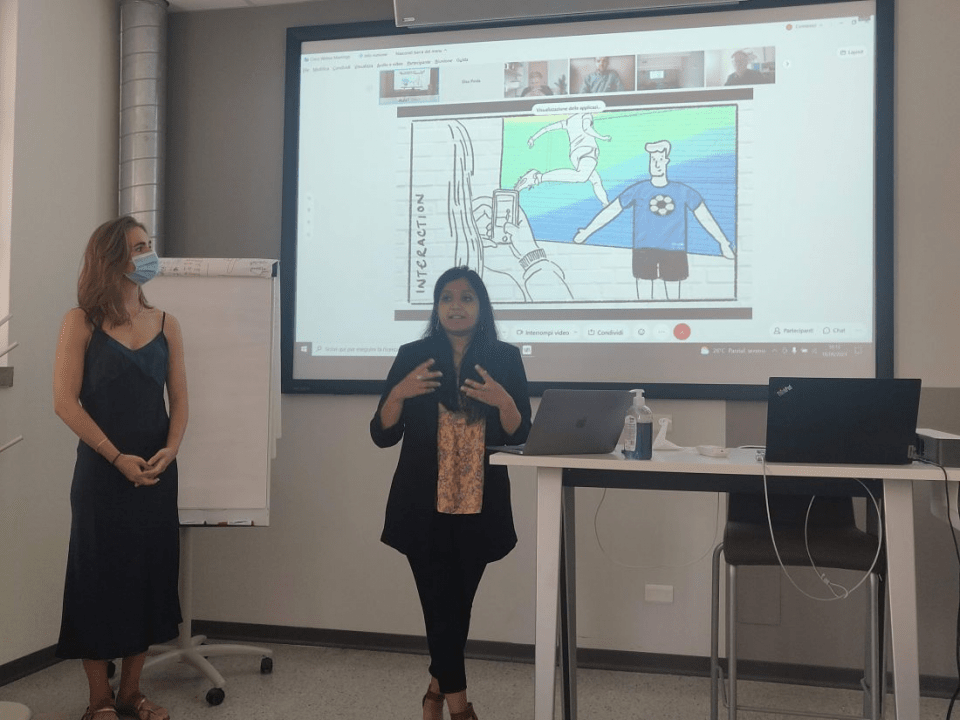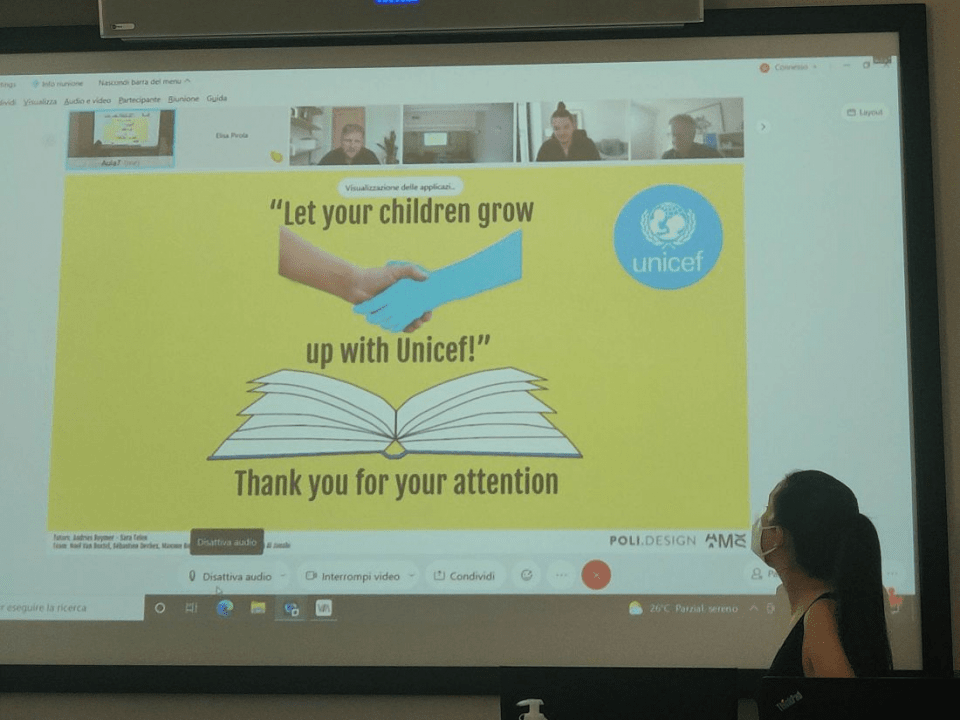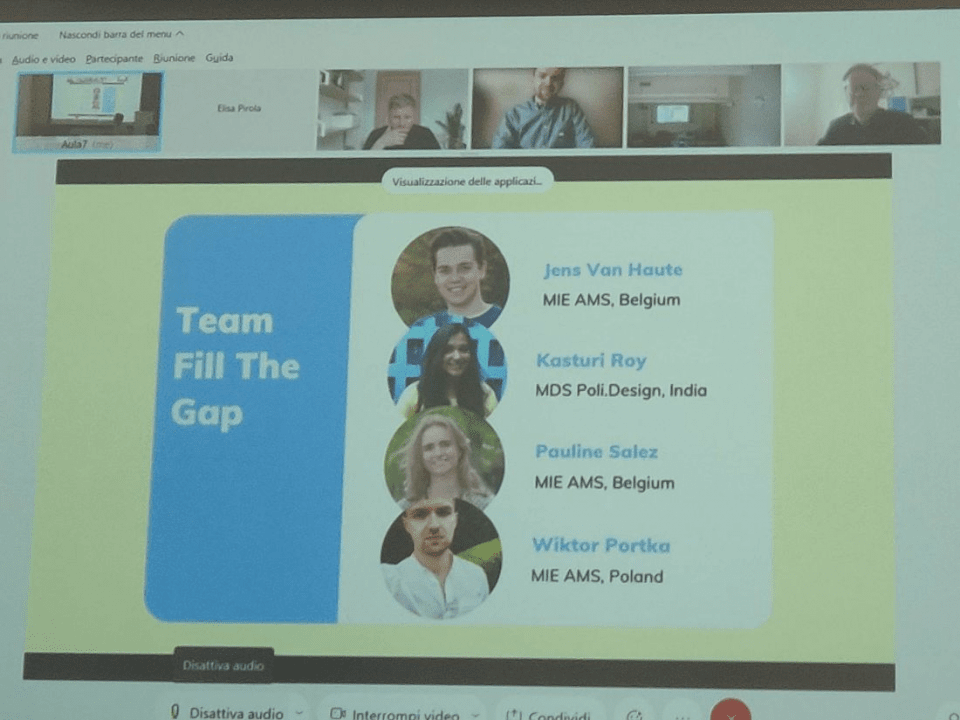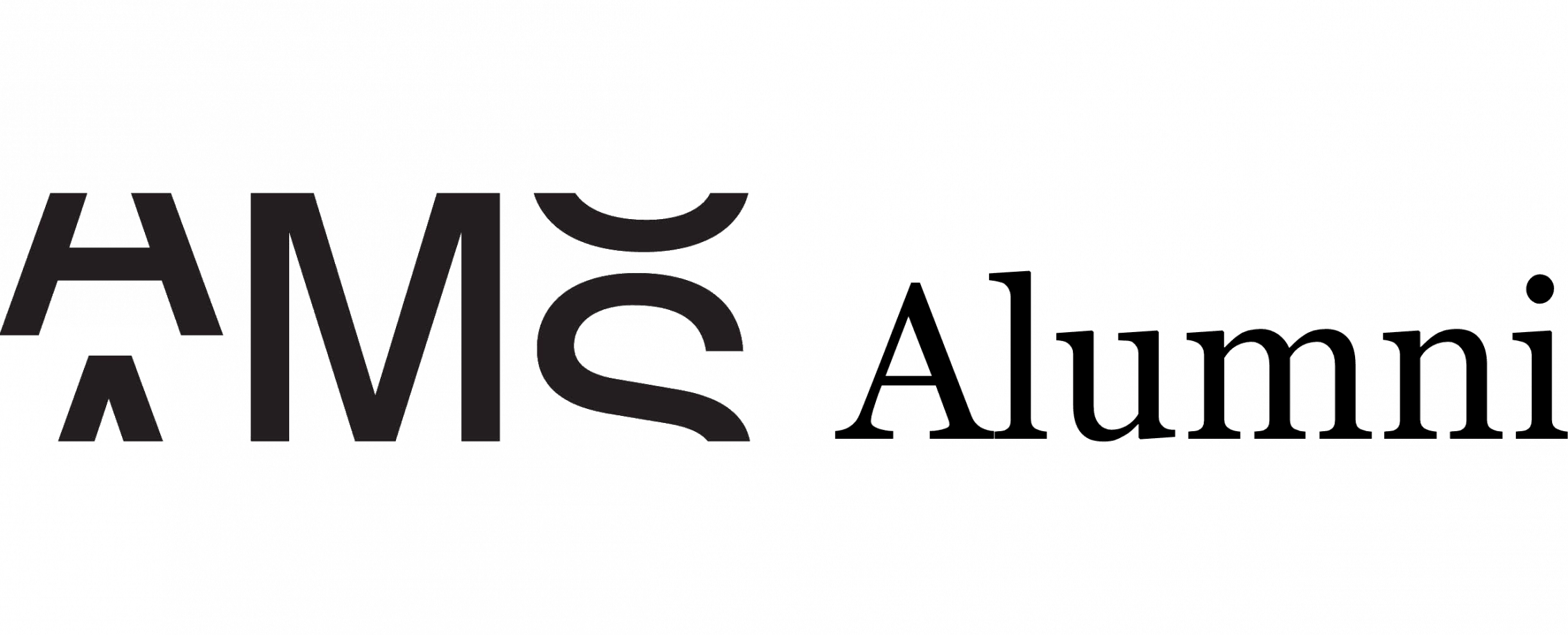The innovation sprint for UNICEF by our students: above and beyond expectations
Clearly, the pandemic has not put a stop to the enthusiasm and creativity of our students. The young potentials of the AMS Master’s program Innovation & Entrepreneurship teamed up with strategic design students from POLI.design in Milan. Together, they ran an innovation sprint to come up with new business concepts for the Piaggio Group and UNICEF Belgium.
Dirk Jacxsens, Executive Director, and Dominique Ceuppens, Advocacy & Communication Director at UNICEF, experienced the students’ drive and professionalism up close and couldn’t be happier when the winning team turned out to be ‘one of theirs’.
A key part of the AMS Master’s program Innovation & Entrepreneurship is working on two real-life innovation projects, one from a Belgian and one from an Italian client. Coached by design thinking and innovation experts, students work together in small, international and multidisciplinary teams. During a short but intensive innovation sprint, they will pool and explore ideas, fine-tune them into a business concept and pitch the results in front of a jury of experts and representatives of both clients.
This approach may be pretty straightforward and delineated, the results are anything but: the business concepts the students manage to come up with in only a short period of time tend to be multi-layered and rich, bringing fresh perspectives and insights. Every year again, the experience proves to be a win-win situation for all parties involved: the students will gain international experience, learn to master 21st century skills, and meet attractive employers. Whereas the companies get to work with energizing teams of young potentials who are unhampered by precedents, resulting in original solutions.

“We wanted to bring in a fresh pair of eyes. Or in this case, several teams of young people.”
Directors at UNICEF Belgium Dirk Jacxsens and Dominique Ceuppens certainly enjoyed the whole journey: “We are always looking for innovative ways of actively engaging our volunteers in increasing brand awareness. This is quite a challenge, particularly since we are operating in an international context, so concepts have to be easy to implement in varying cultures. We had already tried out a number of concepts ourselves, but we wanted to bring in a fresh pair of eyes. Or in this case, several teams of young people.”
“The fact that young potentials from both Belgium and Italy are working together across disciplines already guarantees a multidimensional and multicultural approach. But to maximize the impact, it is important that the students get 100% creative freedom. Along with the coaches from Antwerp Management School, we prepared a design brief presenting our organization and values, best practices & lessons learned, and key criteria, such as international applicability and sustainability. It is important to communicate in detail, so students are well aware of the context they are working in, but it is equally important to nót stifle creativity.”

“We were absolutely delighted with the strong results delivered by all teams.”
“In this way, the process definitely mattered more than the results. At first, that is, because after the initial pooling and exploring of ideas, the student teams regularly met up with us to collect feedback so they could, step by step, filter their ideas and turn them into a business concept. At then, at the end, all teams presented their business concept to the companies and teachers in a grand finale. To decide upon the winning team, we had developed a detailed scorecard together with AMS. But I must say that we were absolutely delighted and surprised to see how all five teams managed to deliver strong results, even though the time was limited and the pandemic made things extra challenging.”
“Of course, UNICEF in itself is an inspiring organization to work for. Still, all student teams went above and beyond to present us with a multidimensional solution, including methodology, target groups, budget, supply chain, possible partnerships, etc. On top of that, each team wrapped up their business concept in a dynamic and persuasive presentation, which is not an easy thing to do, especially in an international context. In the end though, one team clearly stood out; they not only respected our design brief, but they took it to the next level.”

“Otherwise, feasibility always tends to make its way into the creative process.”
“We will certainly keep the other concepts in mind too, but for now, we are thinking about how we can integrate the winning concept into our branding strategy in the coming years. It will still need some fine-tuning, but it certainly brings a fresh perspective. That is the difference with designing solutions yourself or with a consultancy agency: feasibility always tends to make its way into the creative process, whereas students are unhampered by tradition or business reality. So we are quite happy with the results. But most of all, it was energizing and inspiring to be able to work with five teams of young people. They have all become UNICEF ambassadors in themselves, and some of them even sent us their resume. So yes, it is safe to say that it was a great experience for both parties.”
Follow our social media channels and get to know which company is next.
Do you want our students to run an innovation sprint in your company?
Read all about our innovation sprint!
Curious about our Master in Innovation & Entrepreneurship?

comments0
You don't have the rights to read or add a comment.
Suggested Articles

